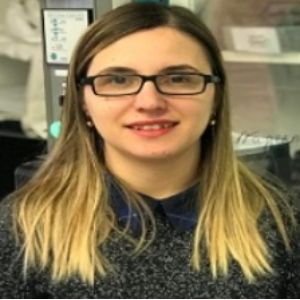Title : BODIPY dyes in light driven catalysis
Abstract:
Due to population growth and rising industrialization, the global energy demand will increase significantly over the coming decades. Amongst several alternative energy schemes, hydrogen has been considered as one of the most promising candidates to provide sustainable, carbon neutral energy on a global scale. Therefore, the light-driven production of hydrogen from aqueous media using homogeneous or heterogeneous multicomponent catalysts is considered one of the most urgent areas of sustainable energy research to provide hydrogen as energy carrier and chemical feedstock. Suitable catalysts for the light-driven hydrogen evolution reaction (HER) must combine high catalytic activity, high stability and long operating times with economical viability and availability on a global scale. The production of solar hydrogen requires multi-functional systems that combine light absorption, charge separation, and catalytic conversion. One promising approach is the combination of all required functions into one molecular or supramolecular photosensitizer–catalyst dyad. The visible light-driven HER by covalent photosensitizer-catalyst dyads is one of the most elegant concepts in supramolecular homogeneous solar energy conversion. For hydrogen production, a deep understanding of the chromophore and catalyst is crucial in building an efficient system. While many current studies focus on noble-metal-based photosensitizers (e.g. ruthenium or iridium complexes) and catalysts (e.g. rhodium, platinum or palladium complexes), there is an urgent need to expore noble-metal-free alternatives. One promising photosensitizer class are boron-dipyrromethene (BODIPY) dyes which are ideal photosensitizers and feature high molar absorptivities, tunable absorption and emission energies, and high fluorescence quantum yields. In addition, they can be chemically functionalized and thus linked to catalytically active species. The aim of this research is to provide fundamental concepts for the design of high-efficiency sunlight-driven homogeneous HER catalyst systems which bring together high catalytic performance with a completely noble-metal free design based purely on earth abundant components.


